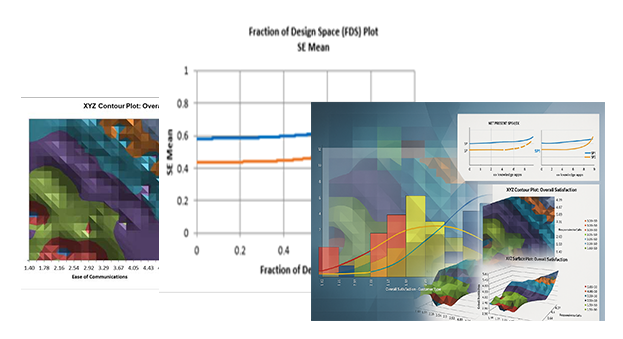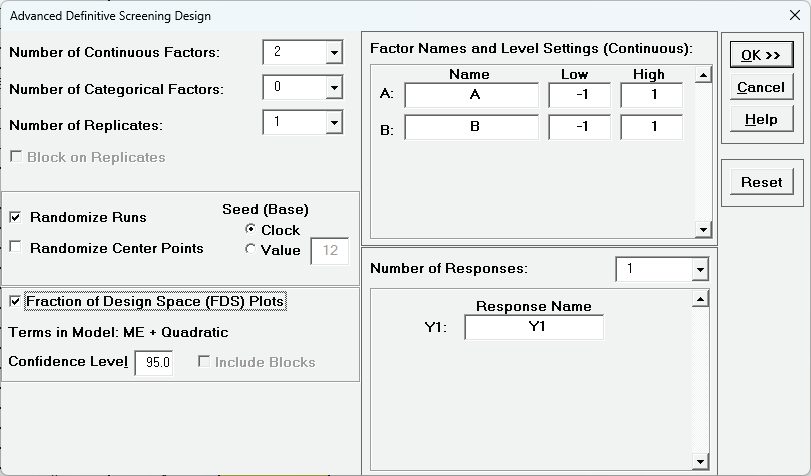Definitive Screening Designs Dialog
- Home /
- DSD Design


Three-level Definitive Screening Designs were introduced by Jones and Nachtsheim [2], with the following desirable properties:
The number of required runs is only one more than twice the number of factors.
Unlike resolution III designs, main effects are completely independent of two-factor interactions. As a result, estimates of main effects are not biased by the presence of active two-factor interactions, regardless of whether the interactions are included in the model.
Unlike resolution IV designs, two-factor interactions are not completely confounded with other two-factor interactions, although they may be correlated.
Unlike resolution III, IV, and V designs with added center points, all quadratic effects are estimable in models comprised of any number of linear and quadratic main-effects terms.
Quadratic effects are orthogonal to main effects and not completely confounded (though correlated) with interaction effects.
With 6 through (at least) 12 factors, the designs are capable of estimating all possible full quadratic models involving three or fewer factors with very high levels of statistical efficiency. Note that this assumes sparsity of effects.
DSDs accommodate both continuous and two-level categorical factors [3], providing versatility for a wide range of applications.
You can add runs to a DSD by creating a DSD with more factors than necessary and dropping the extra factors. The resulting design has all of the properties above and has more power as well as the ability to identify more second-order effects.
For formula details, see the Appendix: Definitive Screening Design. See also Example 4: Definitive Screening Design - 6 Factor Cake Bake.
Montgomery adds: "These designs are an excellent compromise between resolution III fractions for screening and small RSM designs. They also admit the possibility of moving directly from screening to optimization using the results of a single experiment" [5]
Number of Continuous Factors - select 2 to 19 continuous factors. Modify Factor Names and Level Settings (Continuous) as needed. Name is text , Low and High settings are numeric .
Number of Continuous Factors - select 0 to 19 categorical factors. Modify Factor Names and Level Settings (Categorical) as needed. Name is text , Low and High settings are text. Categorical factors are 2 level only and are coded as Low = -1, High = +1. They are treated the same as continuous for regression analysis except quadratic terms cannot be estimated and prediction/optimization restrict the inputs to the specified categorical levels.
The minimum number of continuous factors + categorical factors = 2. The maximum number = 19.
Number of Replicates - select 1 to 10.
Block on Replicates - check to block on replicates.
Randomize Runs - check to randomize runs with Seed (Base) as either Clock or specified Value The latter will randomize the runs but always in the same random order for the same seed value. If unchecked, runs are in given in standard order.
Randomize Center Points - uncheck to make center points (approximately) equal spaced within a block. If checked Center Points are randomized. This option is not available if Randomize Runs are unchecked.
Fraction of Design Space (FDS) Plots. For details on FDS Plots see the Appendix: Fraction of Design Space (FDS) Plots.
Number of Responses - specify number of responses and enter Response Name.